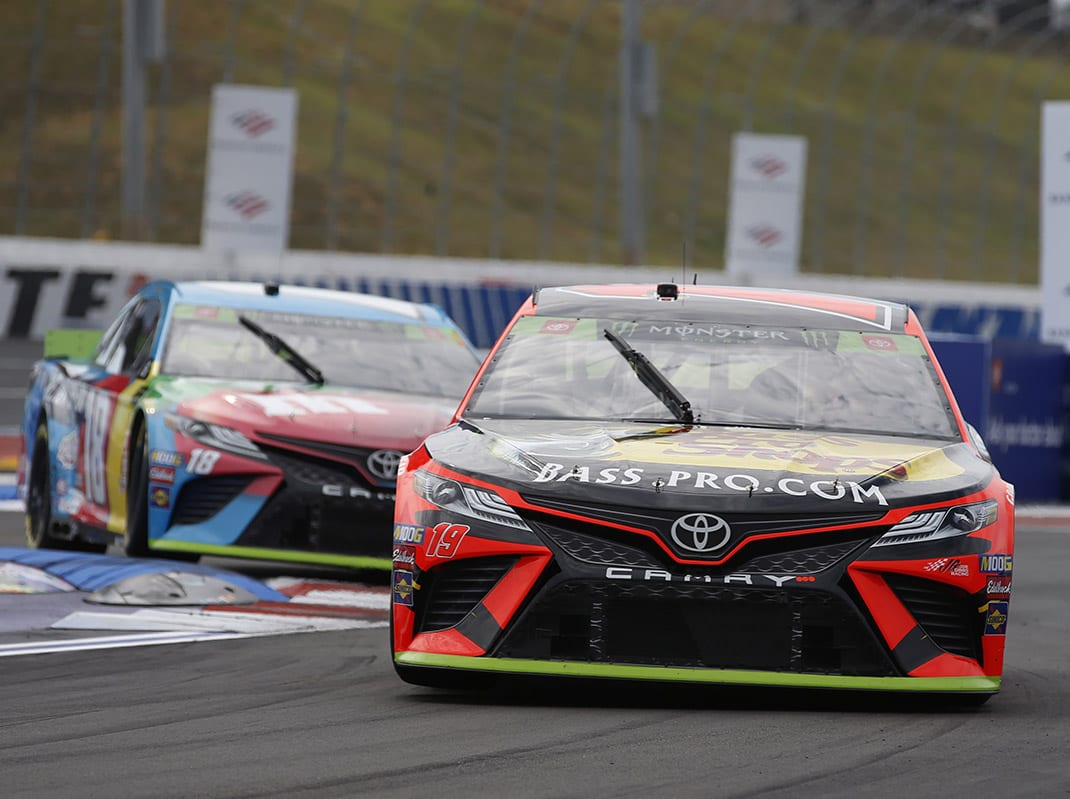When Toyota first entered the NASCAR Cup Series in 2007, few could have predicted the marque’s mammoth rise to becoming the leading manufacturer at American stock car racing’s top level.
When it comes right down to it, Toyota’s top brass couldn’t have anticipated the success either, though it was their ultimate goal.
But over a 13-year period, the Japanese manufacturer has become the modern-day gold standard for success in NASCAR, stamping its emblem all over the record books and leaving its counterparts at Ford and Chevrolet scratching their heads after Toyota turned in one of the most dominant seasons in NASCAR history last year.
Toyota captured its third NASCAR Cup Series drivers’ title in five years last season on the back of a five-win campaign by Joe Gibbs Racing driver Kyle Busch, with Busch topping teammates Denny Hamlin and Martin Truex Jr. to capture his second crown.
It was part of a larger narrative that saw Joe Gibbs Racing drivers claim 19 victories in 36 Cup Series races, including the Daytona 500, setting a modern-era record and eclipsing the single-season victory mark posted by Hendrick Motorsports in 2007.
When the brand cracked NASCAR’s top level for the first time toward the end of the last decade, neither Toyota Racing Development President David Wilson nor Toyota Vice President of Marketing Ed Laukes had visions of a year like what 2019 brought the manufacturer.
“It was a journey. It was a monstrous hill to climb and we had a lot to learn,” said Wilson of Toyota’s early days in the Cup Series. “We just wanted to make sure we could ride out the beginning stages of the journey and make it through to be able to build on that foundation. One of the toughest things when you’re competing with technology, whether it’s racing, Fortune 500 or high-tech business, is that while you’re trying to catch up, your competition is still moving forward.
“So you’re chasing a moving target,” Wilson continued. “And the only way to catch that competition is if you increase your slope of development at a rate that will eventually come out to be greater than your competition. And we struggled with that at the start.”
“When you reflect back on 2007, it’s extremely hard for us to have envisioned that we would get to this point,” Laukes continued. “To have three of the four cars in the championship final four this past year, to have 19 wins and bypass the Hendrick organization … it’s huge marks that we put up that we’re tremendously proud of now in looking back at where we came from.
“People might not realize this, but when we started in 2007, Rick (Hendrick) was a really big help to us as far as helping come into the sport,” Laukes added. “I relied on him and Roger Penske to help me and show me the way as we came in.
“It’s a huge deal for the company, absolutely, that we’ve reached this pinnacle that we’re at now, because for those who remember … it wasn’t always like this.”
That may be an understatement.
That first year, Toyota earned two poles in 36 races, one top-five finish and 10 top-10 results across seven Camrys fielded by Michael Waltrip Racing, Red Bull Racing and Bill Davis Racing.
The company needed a powerhouse team and found it in the form of Joe Gibbs Racing, which switched from Chevrolet to Toyota ahead of the 2008 Cup Series campaign.
“Joe and his family made the decision to join forces with Toyota prior to that (2008) season, actually,” recalled Wilson. “These decisions happen over time, but as Joe always tells people, it was probably one of the most difficult and critical decisions they’ve made as a family in their 25 years of competing in NASCAR.
“I’ll never forget our first sit down, which was in Dallas, Texas, at a Palms restaurant downtown. We had a private room and he told us that he’d had a 14-year relationship with General Motors and that if he was going to do this, it would be the last time he’d ever change manufacturers,” Wilson said. “He wanted to be that sure of his decision. But even more than that, I think he wanted to sit in front of the decision makers and the people that were going to lead this effort for Toyota and he wanted to measure our character, if you will.
“Obviously, that’s not something you can do over a steak dinner, for him or us, but I think it showed a core principle of respect on both sides that we really valued and wanted to carry forward.”
Once JGR fell into step on the Toyota road, things took off for both sides.

Kyle Busch won Toyota’s first NASCAR Cup Series race in March 2008 at Atlanta Motor Speedway. It started a 12-year run that has produced 143 Cup Series victories for Toyota.
Among the drivers who have contributed to Toyota’s Cup Series win count are Busch, Hamlin, Truex, Erik Jones, David Reutimann, Brian Vickers, Kasey Kahne, Carl Edwards, Joey Logano, Tony Stewart and Matt Kenseth.
But despite such a groundswell of success in a relatively short time, Toyota’s fleet in the NASCAR Cup Series has always been slimmer than its counterparts.
For example, in 2019 Toyota only had five full-time Cup Series teams — four from Joe Gibbs Racing and one from Leavine Family Racing — as well as a single-car team in Gaunt Brothers Racing that ran the majority of the year.
In stark contrast, 15 Chevrolets and 14 Fords ran the full season.
Click below to keep reading.
